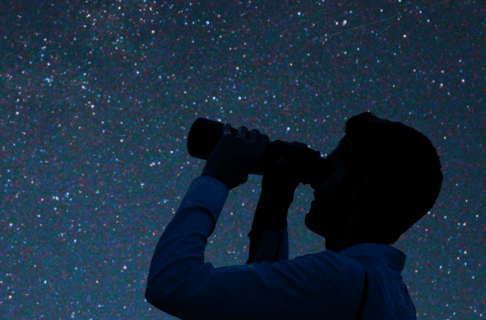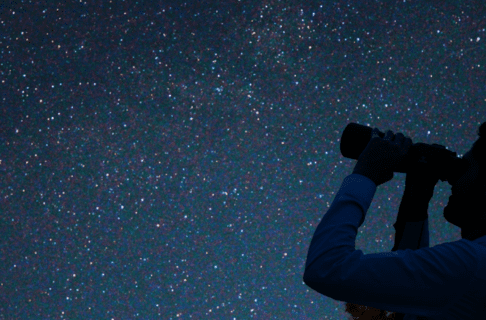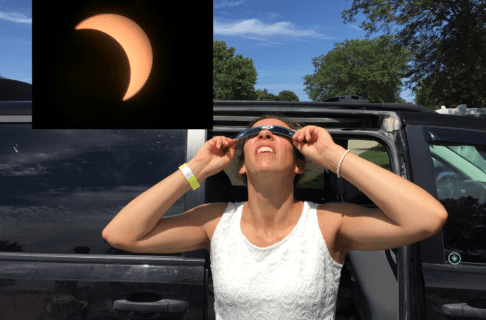Posted on: Wednesday January 31, 2024
The Sky for February 2024
February skies usually mark a transition point between winter and spring, with Imbolc (the Celtic “first day of spring”) occurring at the beginning of the month. Many ancient cultures marked the start of the seasons not using the solstice and equinox, but with the dates halfway between them, since it suited their local weather patterns better. (As a Winnipegger, I’ve never bought into the idea that winter doesn’t start until December 21st!) The modern Groundhog Day draws its inspiration from this custom, falling on Imbolc.
Of course, weather is a local phenomenon, and climate is changing rapidly, so many of these dates seem increasingly out of touch with actual events. In southern Manitoba this year we’ve already had autumn, winter, and spring since the beginning of January, and expect second winter in a couple of weeks – or is it third winter?
Either way, February skies will offer some great sights – if we manage to get any cloud-free nights!
The Solar System
The planets are described in the order they are most visible in this month’s Manitoba skies.
Saturn is visible very low in the southwest after sunset but sets before 7:30pm in Early February. It disappears into the glare of the Sun later in the month as it passes behind our star. It is on the far side of its orbit on February 28th.
Neptune is low in the southwest as darkness falls and sets soon after. You’ll need a telescope and good star-hopping skills to be able to spot it this month as a faint dot.
Jupiter is still high in the southwest after sunset, the brightest object in the evening sky (other than the Moon). Telescope users should enjoy watching as they pass in front of or behind the planet from night to night. Jupiter’s four largest moons can be glimpsed in binoculars, but a telescope allows viewers to see the passing in front of or behind the planet, casting their shadow on the cloud tops, and even reappearing from eclipse as they exit the giant planet’s giant shadow.
Uranus is still about halfway between Jupiter (on the right) and the famous Pleiades (or Seven Sisters) star cluster on the left. You’ll need binoculars to be able to spot it as just one more star in a sea of stars. Point your binoculars halfway along and just below a line from Jupiter to the Pleiades, and Uranus will be in your field of view. If you make a sketch of all the stars you can see and then go back to the same area a few days or a week later, one of the “stars” will have moved. That’s Uranus.
Venus rises early in the morning in the southeast, a brilliant “morning star” that many will notice as during their morning walk or commute. It gets lower each morning as it moves around the far side of the Sun. Also see “Mars”, below.
Mercury drops back into the twilight early in February after a mediocre showing in January’s pre-dawn skies. It passes around the far side of the Sun on February 28th, after which it will reappear in the evening sky this spring.
Mars is still too close to the Sun to be easily seen in the first half of this month, rising just before the Sun in the morning. It passes close to Venus on the 22nd but being much fainter it is unlikely to be seen by most observers.
The dwarf planets are all too faint to be seen without large telescopes, except Ceres, which can sometimes be spotted in binoculars. Unfortunately, Ceres is just coming out of the morning twilight this month and won’t be easily visible until later in the spring.
Celestial Calendar
Fri Feb. 2, 2024: Last Quarter Moon
Tue Feb. 6, 2024 (morning sky): Venus and a thin crescent Moon are both low in the southeast during morning twilight.
Wed Feb. 7, 2024 (morning sky): Theoretically, Venus, Mars, Mercury and the thin crescent Moon are all above the horizon by 8am, but the sky is likely to be too bright to see anything except Venus.
Fri Feb. 9, 2024: New Moon. It’s also the monthly meeting of the Royal Astronomical Society of Canada’s Winnipeg Centre. The meetings are open to the public; find details here.
Wed Feb. 14, 2024 (evening sky): The Moon is to the right of Jupiter in the evening sky. Both fit comfortably into the field of view of typical binoculars (e.g. 7x50s).
Fri Feb. 16, 2024 (evening sky): The First Quarter Moon is close to the Pleiades star cluster.
Tue Feb. 20, 2024 (morning sky): Mars and Venus are in the same telescopic field of view for the next few mornings. You’ll need a clear horizon to the southeast and crystal clear skies to be able to spot Mars against the bright colours of twilight.
Sat Feb. 24, 2024: Full Moon
Thu Feb. 29, 2024: Leap Day plus Dome@Home! We add an extra day in the calendar every four years to keep the calendar in synch with the4 Earth’s orbit around the sun. It actually takes us 365 and a quarter days to orbit the Sun, so every four years we have an extra day to account for. (It’s more complicated than that, since it’s not exactly a quarter day extra, but 0.2422 days… so we don’t have leap years in century years like 2000 and 2100, unless they are divisible by 400. So, 2000 was a leap year; 2100 will not be. Got it?)
Dome@Home, the Manitoba Museum’s award-winning online astronomy show, runs the last Thursday of every month on the Museum’s Facebook page and YouTube channel. This month’s episode will be on February 29th.
Other Events
Zodiacal Light: Towards the end of February, the zodiacal light becomes visible from dark locations. This ghostly cone of light rises into the sky from the horizon along the ecliptic, with its broad end roughly centered on the sunset point on the horizon. The light is the combined glow of myriad dust particles in the plane of our solar system, being backlit at just the right angle to be seen from Earth. See Roy Bishop’s excellent article on this dust on p.268 of the 2024 Observer’s Handbook, published by the Royal Astronomical Society of Canada.
To learn when the International Space Station and other satellites are visible from your location, visit Heavens-Above.com and select the closest city or town to you.
For information on Manitoba’s largest astronomy club, visit the Royal Astronomical Society of Canada – Winnipeg Centre.







